39
The Research Box
Bonnie Mak and Julia Pollack
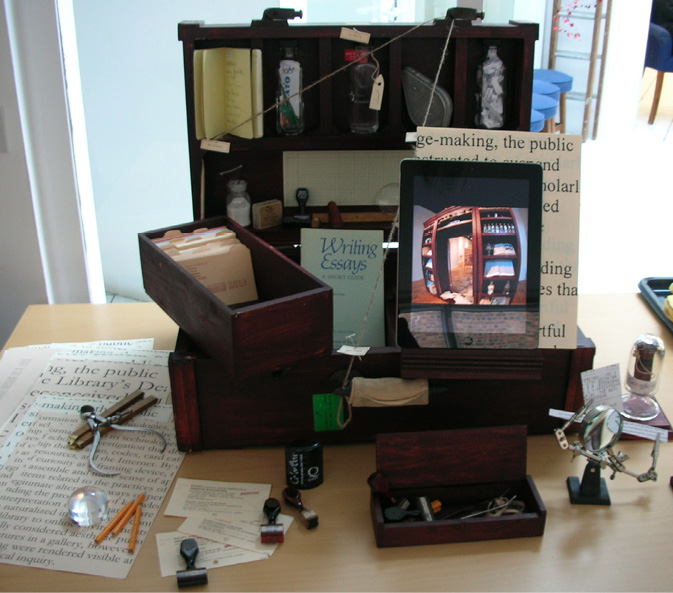
Fig. 39.1 Research Box, on display
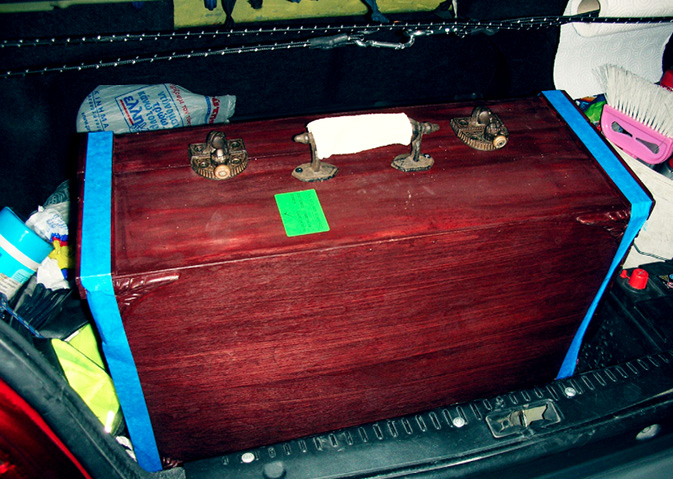
Fig. 39.2 Research Box, in closed form
Taxonomy
Level / Description
Kingdom / Objects
Phylum / Rectangular Objects
Class / Objects called Boxes
Order / Portable Boxes
Family / Boxes that Open
Genus / Wooden boxes
Species / Research Box
Keywords: information infrastructure, knowledge production, performance, publication
Descriptive ‘Metadata’
Box: research box.
Function: to make infrastructures of knowledge visible and viable for study.
Conservation Status: endangered. Very restricted range and limited population size make this species extremely vulnerable. To date, only one specimen has been positively identified.
Description: rectangular in its closed position, with protrusions of handle, clasps, hinges, and ornamented corner details. Approximately the size and shape of a small suitcase. When performing, the box adopts an open, sprawling habit (Figure 39.1).
Colour: reddish-brown and mottled with light streaks. Metallic pieces are dark brown and bronze (Figure 39.2).
Behaviour: Prefers human companionship (Figure 39.3). Puts on a display in academic and community venues. This performance, also known as an exhibition, involves the extrusion of the box’s interior parts. Incorporated into the display are objects related to scholarly research, in an arrangement intended to make visible the practices and infrastructures of knowledge. Performances can be many minutes long, and frequently prompt a dialogue with human interlocutors.
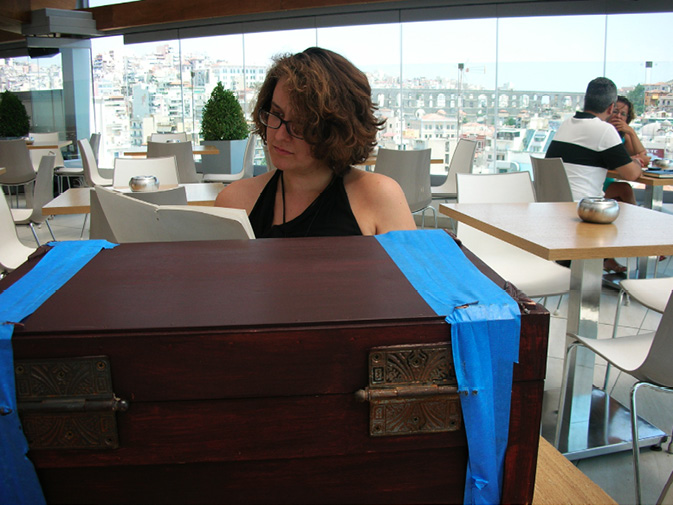
Fig. 39.3 Research Box prefers human companionship
When on display, the research box opens in the manner of a clamshell; its lid stands at a ninety-degree angle to the rest of the body. The inside of the lid is subdivided into compartments that house glass bottles, measuring devices, and other paraphernalia associated with the practices of research (Figure 39.4). During performances, a metallic arm from inside the box will extend upward and outward, with an easel-like appendage at its terminus that is used to showcase items such as books, images, and iPads. Sheltered inside the box is a smaller, free-standing box that is rectangular in shape, with no lid. This smaller box detaches from the research box and becomes a card catalogue that itemises the contents of the display.
By generating a safe space for expressions of surprise, awe, curiosity, and discovery in its immediate environment, the research box guards against hostile reactions. The box thus employs charm to attract interlocutors and divert potential predators. The research box is also able to camouflage itself, and does so with regularity. When pressed, it takes on the language of a particular milieu, and adapts its display accordingly. The flexibility of its performance helps the box appeal to the widest possible audience.
One of the most remarkable features of the research box is its ability to bestow material dimensions upon the processes of thinking and research. In so doing, the box makes visible the infrastructures of knowledge production, which in turn recommends them for scrutiny. For example, the contents of the research box sometimes include bottles of angry tears from a frustrated researcher and sweat from the brow of a librarian. In other performances, different embodiments of scholarly practice may be featured. Individuated in this way, the processes of academic activity are able to be seen and studied. The research box not only makes the infrastructures of knowledge perceptible, but also legitimates them as objects of investigation.
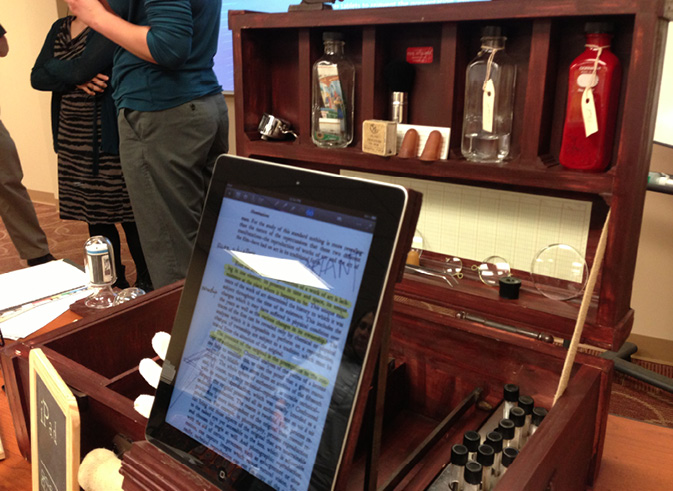
Fig. 39.4 Research Box, detail of performance
Sound: The research box is usually silent. However, it may make a clicking or rattling noise if especially agitated.
Habitat: Urban environments, usually academic. Considers rooms inside man-made buildings suitable for habitation. Roosts mainly on table-tops that are often near sources of natural light. Requires regular conversation and interaction with humans to thrive.
Distribution: Makes its home near its birthplace at the western edge of a major research university in the American Midwest.
Migration: Irregular flight pattern, dependent on opportunities and enticements for display.
Field Marks: Although its skeletal system is highly adapted for travel, the body of this unique specimen betrays signs of the hardships of age (Figure 39.5). Damage has been detected on both the exterior and interior of the box.
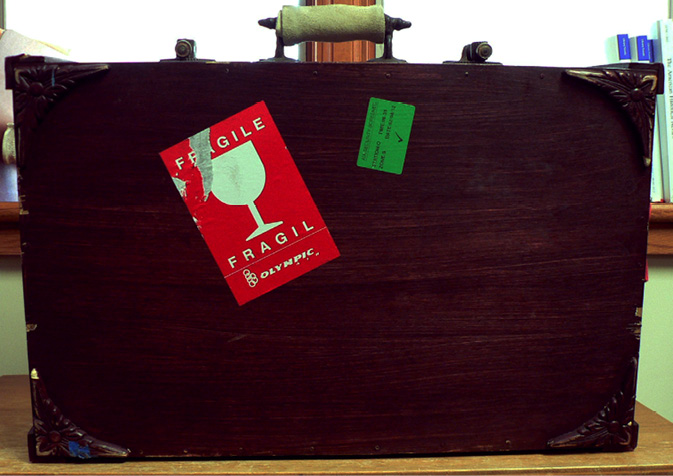
Fig. 39.5 Research Box, field marks
The vulnerability of this specimen has been recognised by officials in Athens, who have affixed a large red label that reads ‘fragile’. Captured, marked with a green tag, and released by Athens International Airport (AIA) Security, Station O, Zone N, on 24 July 2012, at 10:19 am. Recaptured by the same authorities on 2 August 2012, at 6:33 am, tagged at Station O, Zone Z.
The box has been marked with a label of ownership by the State of Illinois of the United States of America.
Field notes
1) Kavala
The first significant sighting of the research box occurred on 24 July 2012. The box was spotted on a rooftop of a hotel in Kavala, in north-eastern Greece, overlooking the city’s port (Figure 39.6). Two days later, the research box was observed on display at the Municipal Tobacco Warehouse, at an event that brought together boxes from across the globe (Figure 39.7). The functions of the research box were compared with those of other boxes, including boxes for children’s games, tobacco, musical instruments, and medicine, as well as artistic interpretations of boxes.
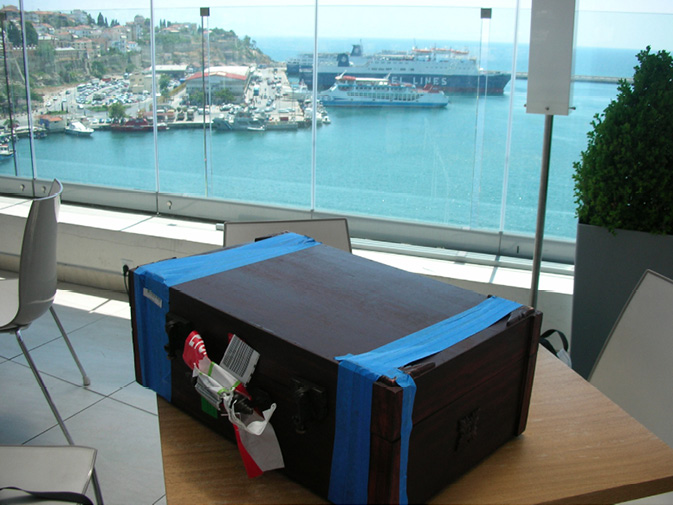
Fig. 39.6 Research Box, in Kavala
In its performance in Kavala, the research box exhibited alternative ways to measure the labours of scholarship in the humanities. Such work includes the search for relevant resources in the library; the curatorial support that negotiates access to those materials; and the subsequent and arduous process of writing, re-writing, revising, and editing. For instance, the sweat of a librarian was bottled for display, and presented next to a copy of the 1959 edition of Melvil Dewey’s Dewey Decimal Classification, a library classification scheme, devised in the late nineteenth century, that correlates the subjects of books with a system of decimal numbers. The performance of these items in the research box attempted to make material the often-invisible practices related to the production of knowledge. The infrastructures around knowledge have been carefully cultivated by librarians through time, and it is through such work that scholars now encounter, engage with, and comprehend both primary and secondary sources. These disciplinary systems, moreover, are not static, and change in response to institutional, societal, and other pressures. The malleability of such infrastructures was highlighted in the research box in its adaptable card catalogue. The index card for the particular edition of Dewey proposed that although the book was once assigned the number 025.4, indicating that it should be understood as concerning ‘subject control’ or classification, it could be given a different number. Indeed, by assigning the book a new number based on its contribution to the exhibition, the research box endowed the 1959 edition of the Dewey Decimal Classification with another significance: it should now be considered as having to do with ‘Museums, Including educational functions, collecting and preparation of materials for exhibit’. With this example, the research box made visible the ways that the provision and interpretation of information can shift over time. The practices by which information is classified are thus implicated in meaning-making and participate in the broader architectures that organise knowledge.
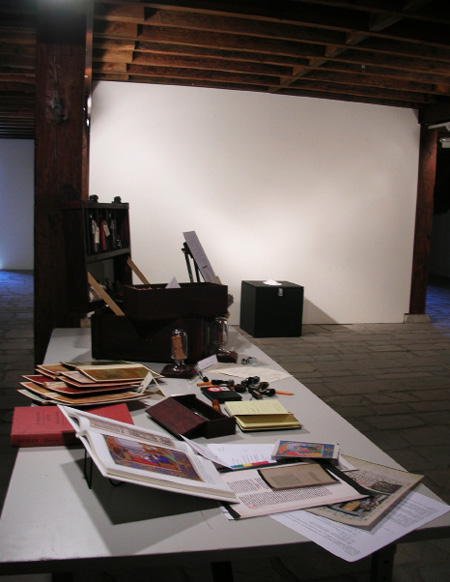
Fig. 39.7 Research Box, on display in the Kavala Municipal Tobacco Warehouse
2) Copenhagen
Three months later, the research box was spotted on 14 October 2012, in the vicinity of the Chicago O’Hare International Airport. It was then tracked northeast to Copenhagen, where it was seen on display at the Copenhagen Business School (Figure 39.8). Its performance appears to have been prompted by a colloquium about how the approaches of art and design might be used in social studies of science and technology. During the event in Copenhagen, found objects were used to build ‘enquiry machines’, or devices that would aid the study of science and scientific practice (Figure 39.9). In response to these activities, the research box transformed itself into a kind of enquiry machine for the exploration of humanistic research (Figures 39.10, 39.11). By using sculpture to make palpable the processes of scholarly work – for example, with its bottles of tears and sweat – the research box modelled how art and performance might be deployed to critically examine the activities related to the production of knowledge.
Although the research box is generally concerned with work in the humanities, it proposed a way to analyse corresponding practices in the sciences. The research box adopted scientific equipment and vocabulary to re-cast the book, the card catalogue, the database, and the labours of the librarian as objects of investigation. For instance, the performance involved a set of culture tubes, pieces of laboratory glassware that are frequently used for handling live organisms. But instead of preserving samples of blood and other fluids, the culture tubes in the research box contained lines of prose. By assembling a specimen collection of vague ideas, passing thoughts, and unspoken words, the box offered a novel reading of both humanistic and scientific research. The labour of scholarship in the humanities was thus presented for scientific scrutiny; at the same time, the box implied that scientific practice itself could be examined by interrogating why and which particular bodies had been selected for study. In this performance, the research box challenged the constitution of that which is called ‘data’ – that is, what might be uncritically considered specimens – across the disciplines and explored how assumptions about evidence continue to organise our systems of understanding.
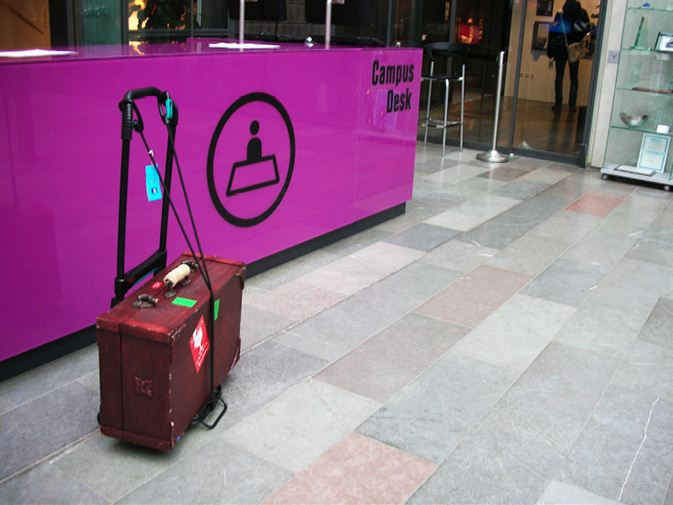
Fig. 39.8 Research Box, at the Copenhagen Business School
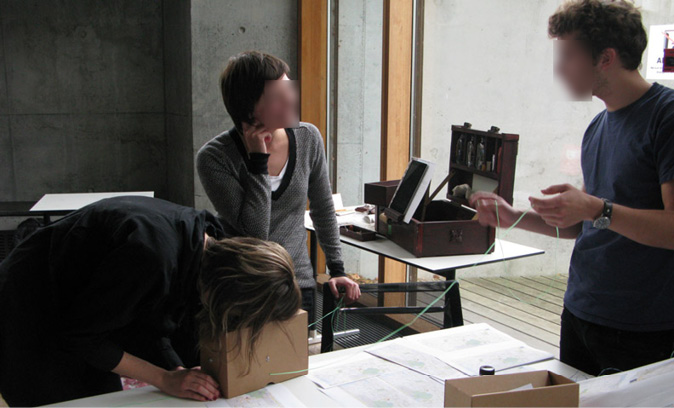
Fig. 39.9 Human interlocutors at the Copenhagen Business School, building enquiry machines; meanwhile, Research Box reconfigures itself as an enquiry machine
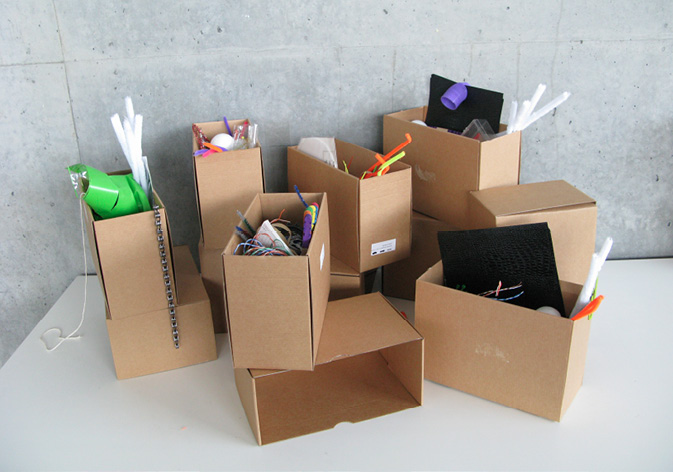
Fig. 39.10 Enquiry machines in Copenhagen
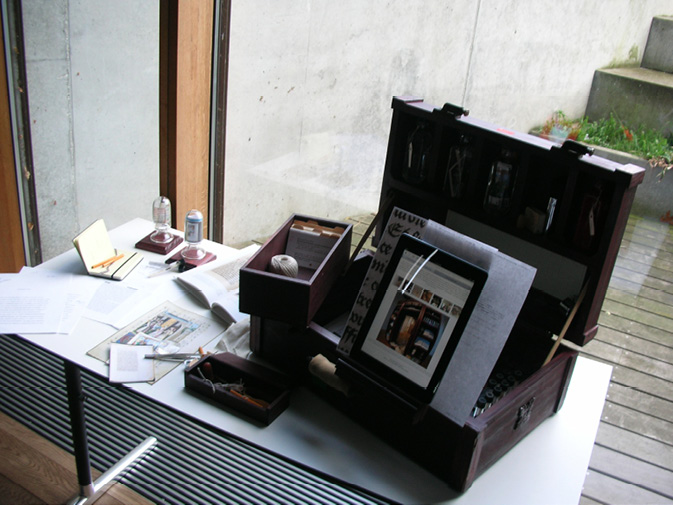
Fig. 39.11 Research Box, transformed into enquiry machine
3) Washington, D.C.
On 14 December 2012, the research box was spotted at the Folger Shakespeare Library in Washington, D.C., performing to an audience of book historians, librarians, and literary scholars. This particular exhibition of the research box framed the printed book as a writing technology. The box helped its interlocutors perceive modern books as objects of study by comparing the printed codex with the technologies of medieval manuscripts and their digitisations. More than developing a simple genealogy, however, the box shed light on the labour of making books and transmitting ideas. The circumstances in which books are manufactured and circulated exert influence upon how they are received – a mass-produced paperback conveys a different message from a hand-tooled volume; a book in a research library communicates differently from its counterpart in a museum. Social, cultural, and technical conditions related to the production and dissemination of books, whether a thirteenth-century manuscript or twenty-first-century digitisation, were therefore made material by the box, to lay bare their effects on meaning-making.
Because the audience was already familiar with how a printed book might be produced, the performance of the research box focused on the practices related to the digitisation of books. The audience was invited to use a portable scanner to digitise texts and images (Figure 39.12). The resulting digital files were saved to a laptop, and then – given a viable Internet connection – uploaded to a cloud server, whereupon they were retrieved back to be viewed on the iPad that sat on the easel-like appendage of the research box. By physically explicating the non-trivial task of digitisation, the box urged its interlocutors to take into account the expenditures of time, energy, and resources in service of the manufacture, dissemination, and preservation of digital information. Just as the production of a manuscript or printed book requires the investment of labour and resources, so too do their digitisations. Moreover, the particular labour and resources, different in each case, crucially shape the end-product.
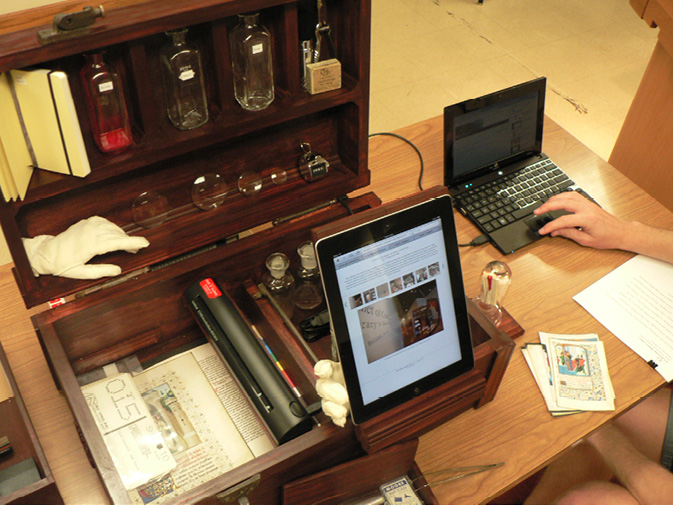
Fig. 39.12 Research Box, performing the digitisation of a text
The box demonstrated how difficult it was to grasp with accuracy the dimensions, weight, and sensations of a particular codex when mediated through computational technologies. By exhibiting pages that had been printed from a digitisation – in a surprisingly varied range of size, form, and quality – the research box provided an embodied argument about the relationship between a book and its so-called digital surrogate (Figure 39.13). In so doing, the performance called into question the frequent perception of such resources as interchangeable. By foregrounding the practices that underpin materials (both analogue and digital), the box contended that scholarship relying on books or digitisations as evidence must also reckon with the social and cultural conditions of their production. Such resources not only enable the transmission of ideas, but also serve to control and constrain it, and thereby influence the process of knowledge-making.
4) Champaign, Illinois
The research box performed for a group of computer professionals on 17 April 2013, in a basement of a building on the campus of the University of Illinois. In this exhibition, an iPad – a device quite unremarkable to the audience – was arranged with other technologies of communication, including wax tablets, medieval manuscripts, and printed books. Defying the received narrative around digital technologies that proclaims that they are new and ahistorical, the research box suggested how the iPad might be located in a longer trajectory of writing technologies. Wax tablets, for instance, share a striking resemblance to the iPad. These tablets were used from antiquity to the nineteenth century for ephemera such as school exercises, letters, notes, and other documentation of transient importance. The iPad is notably employed for similar purposes that include sending brief e-mails, following social media, and watching videos. The juxtaposition of the wax tablet and the iPad underscored the relationship between their form and function; despite the millennia that separate them, the respective technologies suggest how they are meant to be used. The research box made the iPad central to its performance so that the audience might come to regard the device as an object of study and begin to imagine the ways that digital technologies can actively direct the provision and transmission of information.
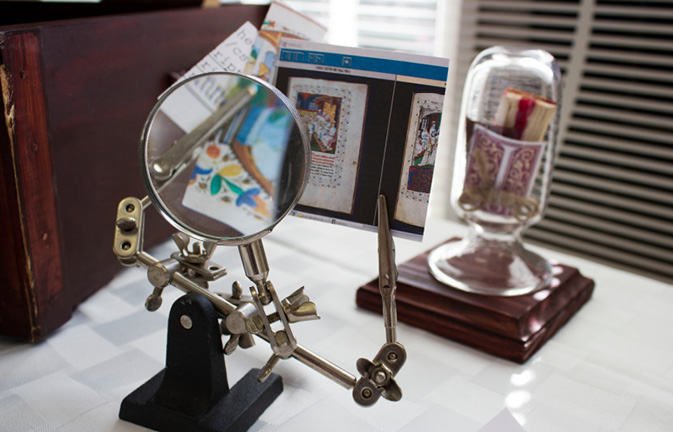
Fig. 39.13 Research Box, drawing attention to the varying sizes of digitised texts and images
In the performance, the iPad displayed one of the many apps developed for the annotation of e-texts. However, the box intimated that the honing of such programs might profit from an examination of the rich history of commentary, and, in particular, the complicated systems of interlinear and marginal glosses that flourished through the twelfth century. Confronted with earlier forms of writing technologies, interlocutors were asked to think carefully about the perceived newness of the iPad, and how this perceived newness forecloses our ability to build upon – and take advantage of – well-established strategies for visualising information and communicating ideas.
Because this performance was designed for computer experts, its emphasis was slightly different from that of the previous exhibition at the Folger Shakespeare Library. Whereas the display in Washington located the book as a kind of technology, produced as a digitisation is produced, the central focus of the performance in Illinois was to make visible and to historicise digital technologies. The iPad was used to promote a critical exchange about how modern technologies might operate to configure information and its reception. That is, the infrastructures related to the manufacture and maintenance of computational devices, networks, and cloud computing, among others, also wield significant dominion over the ways that knowledge is transmitted and produced today; it is increasingly through these apparatuses and their protocols that information is generated, disseminated, and received. Only by investigating technologies and their infrastructures may we develop a more nuanced understanding of knowledge practices in the twenty-first century.
5) London
The box was seen on display on 14 June 2013, at the Centre for Creative Collaboration, an initiative of the University of London (Figure 39.1). The performance of the research box in London occurred during a conference about inventive modes of transmitting knowledge.
The performance made a spectacle of the practices and processes of different methods of publication. The time and labour of writing and revising an article were materialised in an exhibition of the 3000 words and four images that had to be excised for the final copy. The efforts and insights of the peer review process were likewise made physical for examination as lines of prose, bottled in culture tubes. Also available for scrutiny in the specimen collection were the costs and networks involved in the circulation of ideas. The performance invoked various means of transportation and telecommunication: aircraft, postal services, computers, and the Internet. Such costs were embodied as taxi receipts from Kavala; postage paid to Post Danmark, the Danish postal service; and invoices from airlines for excessive baggage related to the travels of the research box in its attempt to circulate knowledge. Furthermore, the box made reference to the paywalls, journal databases, and publishing contracts that restrict access to peer-reviewed articles. In this way, the performance highlighted the various pressures that shape the dissemination of ideas, whether in sculpture or prose, whether in printed or digital form.
The research box in London thus charted the infrastructures related to publication, its performance revealing the constraints of both traditional and inventive modes of transmitting knowledge. Moreover, the box illustrated how academic publishing is increasingly subject to the agenda of private multi-national corporations. The exhibition thus sought to animate a debate about the conditions of publication, a topic of considerable interest to scholars whose productivity is assessed according to their publishing record. As the research box contends, the evolving infrastructures of academic publication regulate the dissemination of scholarship, of course, but more importantly they may soon also alter how research is to be conceived and conducted in the public sector.
6) Champaign, Illinois
Probably because of its advancing age and increasing frailty, the research box appears to be hesitant to stray far from its regular habitat in the American Midwest. The last confirmed sighting of the box occurred on 6 May 2014, where it was observed as part of a celebration of books published by scholars in the humanities. The event was held at the Illinois Program for Research in the Humanities, on the campus of the University of Illinois (Figure 39.14). The performance was designed to fuel a discussion about the prevailing metrics of scholarly assessment and what kinds of publication may be registered as products of the humanities.
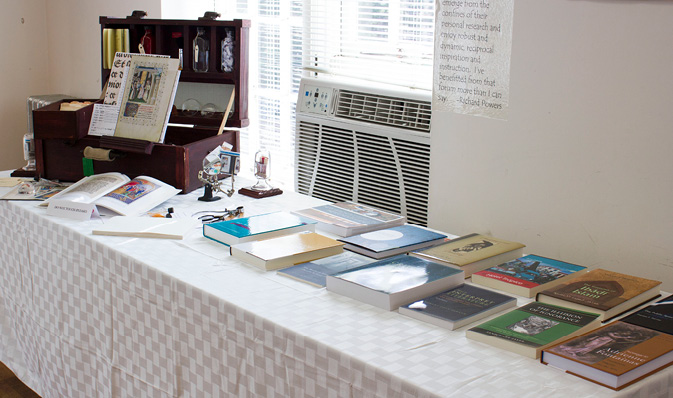
Fig. 39.14 Research Box, performing as a publication in the humanities
Responding to the occasion, the research box included a book publication in its performance, but additionally staged the processes and practices involved in that scholarly endeavour. Showcased were early drafts of the book, How the Page Matters; the e-mail conversations between the author and copy-editor; the book and page layouts created by a graphic designer that were ultimately rejected by the publisher; and the hardcover and paperback versions of the book that were published in 2011 and 2012 respectively. Furthermore, the research box made visible the processes of peer review by including the three rounds of reports that spanned two years, the judgement of the manuscript committee of the press, and the author’s responses to these appraisals. In this way, the research box attempted to bring to light some of the different hands and kinds of labour that contributed to the publication of How the Page Matters. The performance was a way to problematise authorship and authorial intention. Namely, to what extent may a book be said to have been written by an author or to represent an author’s intention when its production is enmeshed in the varying agenda of peer reviewers, editors, designers, publicists, and the academic press? Furthermore, given this complicated history of manufacture that draws upon the expertise of many parties, what does it mean that the single-authored book continues to be recognised as the standard for research productivity in the humanities? The research box also raised questions about what should constitute a scholarly contribution in the humanities, and whether such contributions are accurately acknowledged and measured by current methods of evaluation.
The production and transmission of knowledge have always been entangled in the familiar infrastructures of classificatory schemes and institutional mandates, but now must also be considered in light of information networks that are subject to foreign policy and the private interests of multi-national corporations. Although these infrastructures may be difficult to perceive, they play a critical role in how we engage with all informational resources – whether archival materials, early printed books, or digital video. In order to grapple with the practices of knowledge-making in the twenty-first century, it is also necessary to understand the conditions in which such activities take place. The research box materialises some of these circumstances through an array of sculptures and performances. By bestowing physical dimension upon the infrastructures of information, the box is able to propose the apparatus of knowledge-making as a legitimate object of study. The biological imperative of the research box, then, is not focused on reproduction, but on inspiring human interlocutors to interrogate the ways that knowledge has been and continues to be produced and transmitted.
Since its last performance in May 2014, there have been no reported sightings of the research box. Rumours of its retirement or death continue to circulate, but these accounts remain speculative in nature.
Appendix: Confirmed Sightings of the Research Box
Location: Graduate School of Library and Information Science, now known as the School of Information Sciences; Champaign, Illinois.
Date: 18 July 2012
Event: Boxing Up the Cabinet: A Preview
Location: Kavala Municipal Tobacco Museum; Kavala, Greece.
Date: 26–29 July 2012
Event: Knowledge in a Box: How Mundane Things Shape Knowledge Production
Location: Copenhagen Business School; Copenhagen, Denmark.
Date: 17 October 2012
Event: Experiments in (and out of) the Studio: Art and Design Methods for Science and Technology Studies, a European Association for the Study of Science & Technology (EASST) Workshop
Location: Folger Shakespeare Library; Washington, D.C.
Date: 14 December 2012
Event: Teaching Book History Workshop
Location: University of Illinois; Champaign, Illinois.
Date: 17 April 2013
Event: Teaching with Technology Brown Bag Series, Campus Information Technologies and Educational Services
Location: Centre for Creative Collaboration; London, UK.
Date: 14 June 2013
Event: Inventive Enactments of the Social: Transmissions and Entanglements
Location: Illinois Program for Research in the Humanities; Urbana, Illinois.
Date: 6 May 2014
Event: Awards Reception, Illinois Program for Research in the Humanities, University of Illinois